35+ Realistic Photos That Reveal The Struggles Of Americans During The Great Depression
The Great Depression is now viewed as a defining decade between the Roaring Twenties and World War II. However, it was initially seen as a mere recession, a market correction. Only as the profound hardships became clear did it earn its infamous title.
But it hasn’t been easy for later generations to understand just how devastating the Great Depression was. While many may have heard of the Dust Bowl—a severe drought that ravaged the Great Plains—its true impact can be difficult to fully comprehend.
Scroll through these photos to delve deeper into the struggles Americans endured during the Great Depression.
An overview of the Great Depression

The Great Depression began in August 1929, ending the economic boom of the Roaring Twenties.
It was marked by several financial crises, including the 1929 stock market crash, regional banking panics in 1930 and 1931, and international financial crises from 1931 to 1933.
The downturn reached its lowest point in March 1933 when the commercial banking system collapsed, and President Roosevelt declared a national banking holiday.
Between 1929 and 1932, global GDP fell by an estimated 15%, a stark contrast to the less than 1% drop during the 2008-2009 Great Recession.
Its profound impact on the United States

The Great Depression had a profound and varied impact across the globe, but the United States experienced some of the most severe consequences.
As stock market values continued to decline and businesses failed, unemployment soared. By 1932, one in four workers was out of a job, and the loss of life savings due to bank failures left many Americans destitute.
With no jobs or financial security, thousands found themselves homeless and forced to live in makeshift shantytowns, known as “Hoovervilles,” named somewhat derisively after President Herbert Hoover.
By 1933, the crisis had reached alarming levels: approximately 25% of all workers and 37% of those in nonfarm jobs were unemployed.

One of the most tragic aspects of the Depression was the plight of displaced farmers, commonly referred to as “Okies.” Driven by dire economic conditions and devastated by the Dust Bowl, these farmers migrated to California in search of work.
Unfortunately, their hopes for a better life were often dashed as the state was unable to absorb the large influx of migrants.
The crisis was compounded by a dramatic drop in industrial production, which fell by 50%, and a 30% decrease in international trade. Investments also plummeted by an astounding 98%, while primary sector industries like mining and logging saw their demand evaporate.
The agricultural sector was particularly hard hit, with crop prices dropping by 60% due to overproduction and persistent drought conditions. This led to widespread financial distress, evidenced by the failure of over 5,000 banks.
Recovery efforts of the American government

Recovery from the Great Depression began in 1933 in many countries. In the U.S., although recovery started in early 1933, it took over a decade to return to the 1929 GNP, with unemployment still around 15% in 1940, down from 25% in 1933.
Economists debate the reasons behind the recovery during Roosevelt’s presidency. Many believe that his New Deal policies helped accelerate recovery, though they weren’t aggressive enough to fully end the recession. Some point to the positive effects of expectations of reflation and rising nominal interest rates.

However, a recession in 1937 interrupted the recovery, partly due to the Banking Act of 1935, which raised reserve requirements and caused a monetary contraction. Economic growth resumed in 1938.
The common view is that the Great Depression ended with the advent of World War II. Many economists argue that government spending on the war effort accelerated the recovery and helped reduce unemployment, although some believe it didn’t play a major role in the economic turnaround.
Significant government interventions and reforms

The Great Depression transformed the American political and economic landscape significantly.
It led to a major political realignment, forming a coalition that included big-city ethnics, African Americans, organized labor, and Southern Democrats, all supporting interventionist government policies.
The federal government’s role in American life expanded, introducing innovations like old-age pensions, unemployment compensation, public housing, and stock market regulation.
Labor relations were fundamentally changed, resulting in a stronger labor movement and policies supporting collective bargaining. The farm economy was also transformed with federal price support.
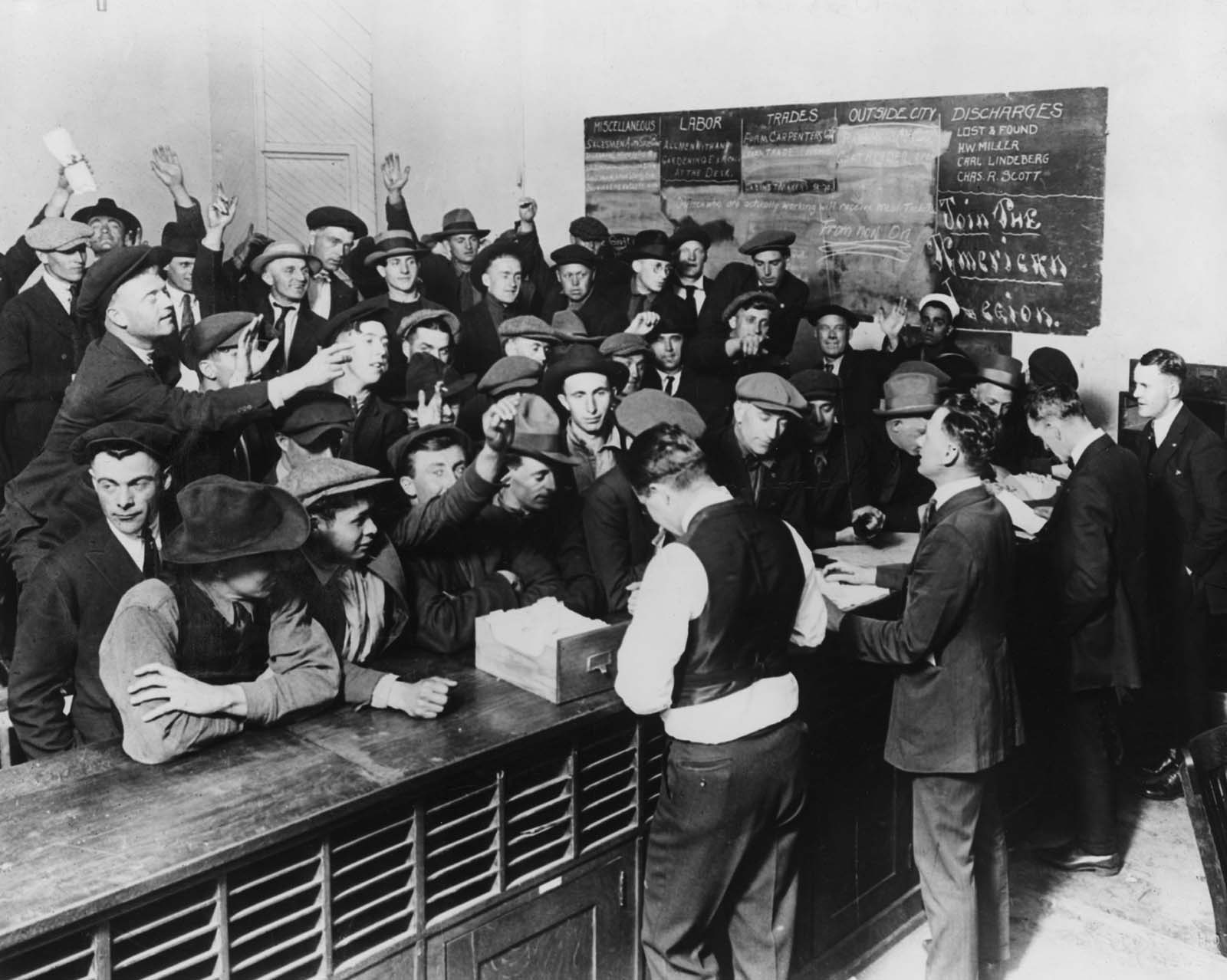
The Depression shifted Americans’ view of the federal government. They saw it as an agent of action and reform and the protector of public well-being. It influenced modern economic theories and government responses to economic downturns, such as stimulus packages and Keynesian economics.
Moreover, the Great Depression left a lasting impact on American literature, inspiring works like John Steinbeck’s “The Grapes of Wrath” and “Of Mice and Men.” These cultural and economic shifts continue to shape the United States today.
More photographs showcasing the stark realities during the Great Depression
1. A struggling family during the Great Depression

2. An unemployed man lies down on the New York docks, 1935

3. Unemployed men line up in front of a Chicago soup kitchen, operated by Al Capone

4. Arkansas cotton pickers, 1935

5. Two young boys sit on the porch in Arkansas, 1935

6. Public health nurses from the Child Welfare Service visit a shanty home for a checkup

7. A poor mother stands with her two children in Oklahoma, 1936

8. The family of an unemployed man sits around a wood stove in their empty home, 1937

9. Children from the homes of unemployed miners gather together for nursery school in March of 1937 in Scott’s Run, West Virginia

10. The Central Park of New York City became Hooverville, a shanty town for the newly impoverished, 1933

11. An old woman receives her Thanksgiving ration of food as other hungry people wait in line, 1930s

12. Unemployed men sit outside their makeshift homes in lower Manhattan, 1935

13. A large group of New Yorkers waits on a food line, 1932

14. Unemployed men smoke cigarettes amid their shantytown in lower Manhattan, 1935

15. Men wait on a breadline in New York, 1932

16. Unemployed single women march to demand jobs, 1933

17. A family of migrant workers fleeing from the drought in Oklahoma camp by the roadside in Blythe, California, 1936

18. An unemployed man during the Great Depression

19. Men looking for work hold up signs, 1930s
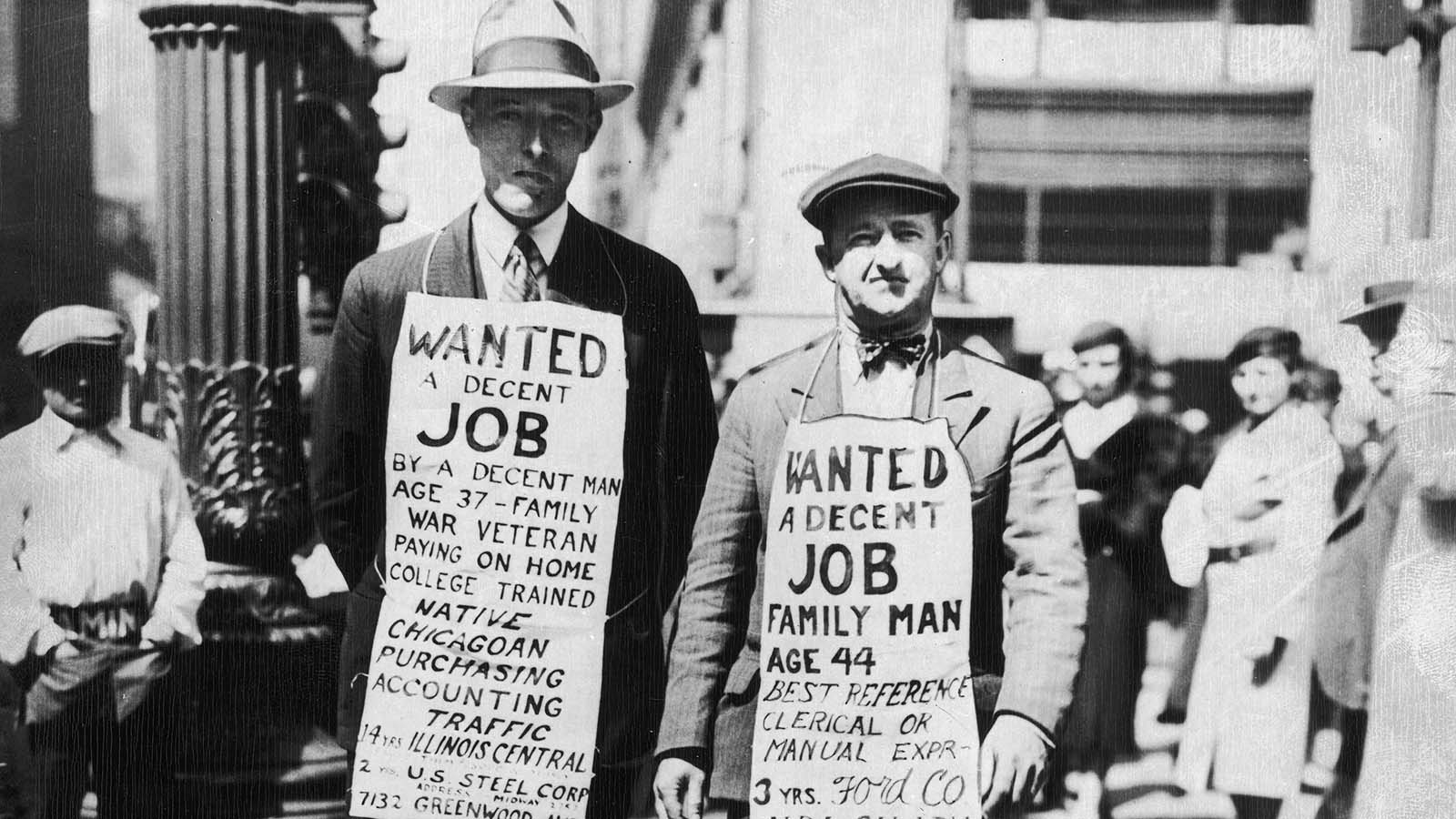
20. Children from Oklahoma staying in a migratory camp in California, 1936

21. The children of a migrant family living in a trailer in the middle of a field south of Chandler, Arizona, 1940

22. Thirty-two-year-old Florence Owens Thompson with three of her seven children at a pea pickers’ camp in Nipomo, California, 1936

23. Crowd gathering at the intersection of Wall Street and Broad Street after the 1929 crash

24. Crowd at New York’s American Union Bank during a bank run
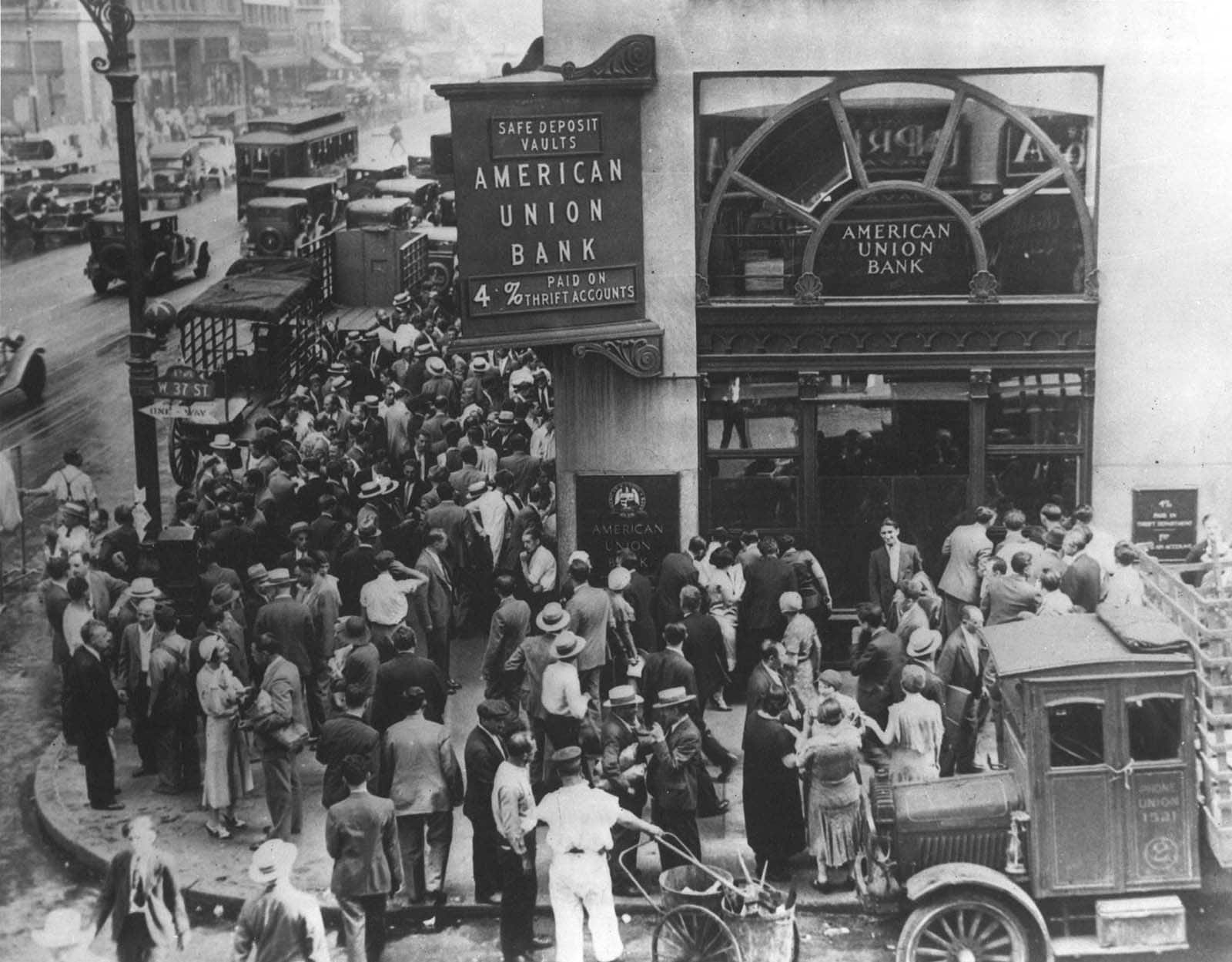
25. Crowds outside the Bank of United States in New York after its failure in 1931

26. Buried machinery in a barn lot; South Dakota, May 1936. The Dust Bowl on the Great Plains coincided with the Great Depression

27. Greek migratory woman living in a cotton camp near Exeter, California, ca. 1935

28. An unemployed coal miner’s daughter is carrying home a can of kerosene, company housing, Scotts Run, W. Va., 1938
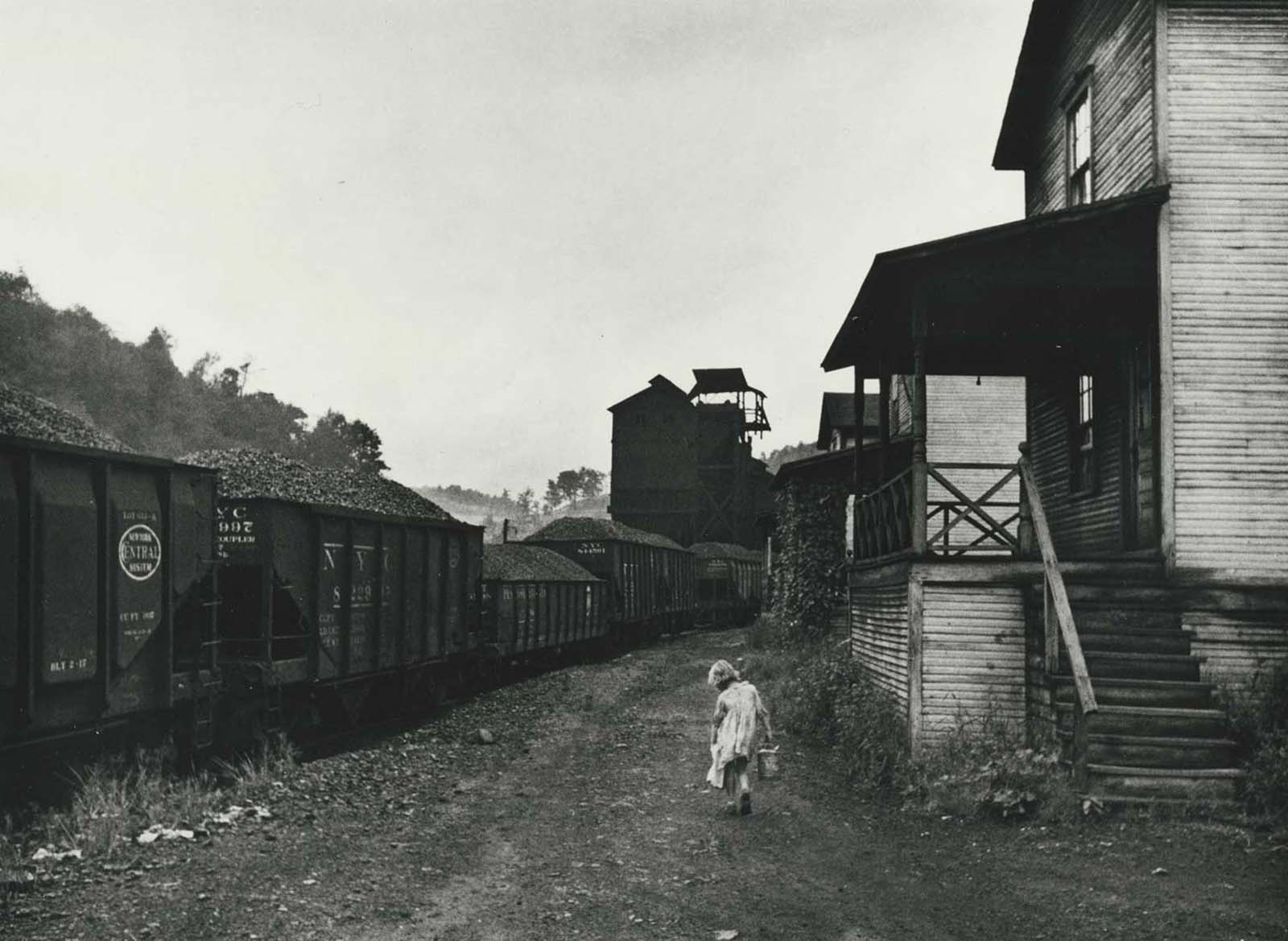
29. Farmer walking in a dust storm, Cimarron County, Oklahoma, circa 1936

30. Government agent interviewing a prospective resettlement client in Garrett County, Maryland circa 1938

31. Prospective homesteaders in front of the post office at United, Westmoreland County, Pennsylvania, 1935

32. Power farming displaces tenants from the land in the western dry cotton area, Childress County, Texas, 1938
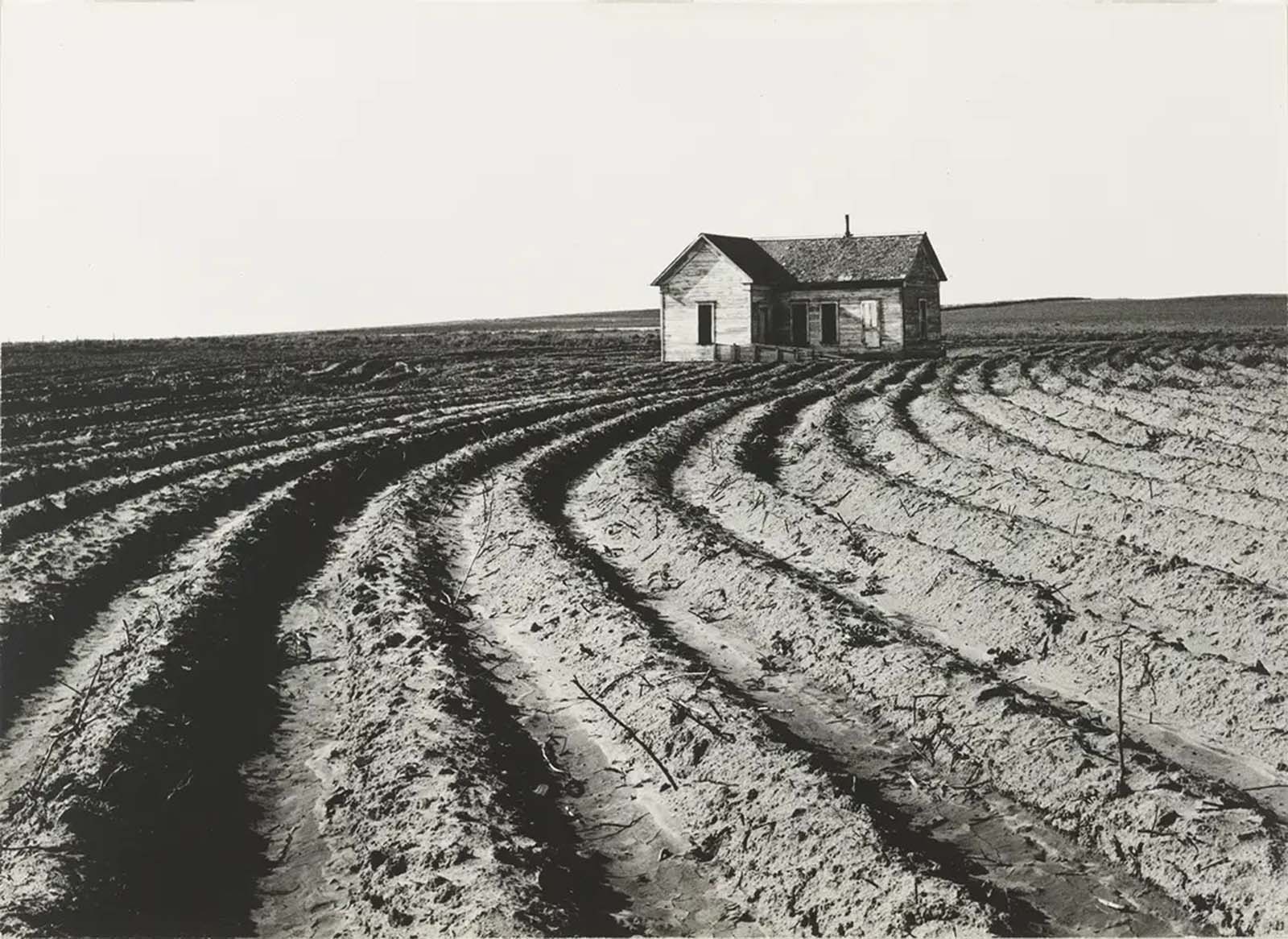
33. Farm foreclosure sale, 1930s

34. Toward Los Angeles, California
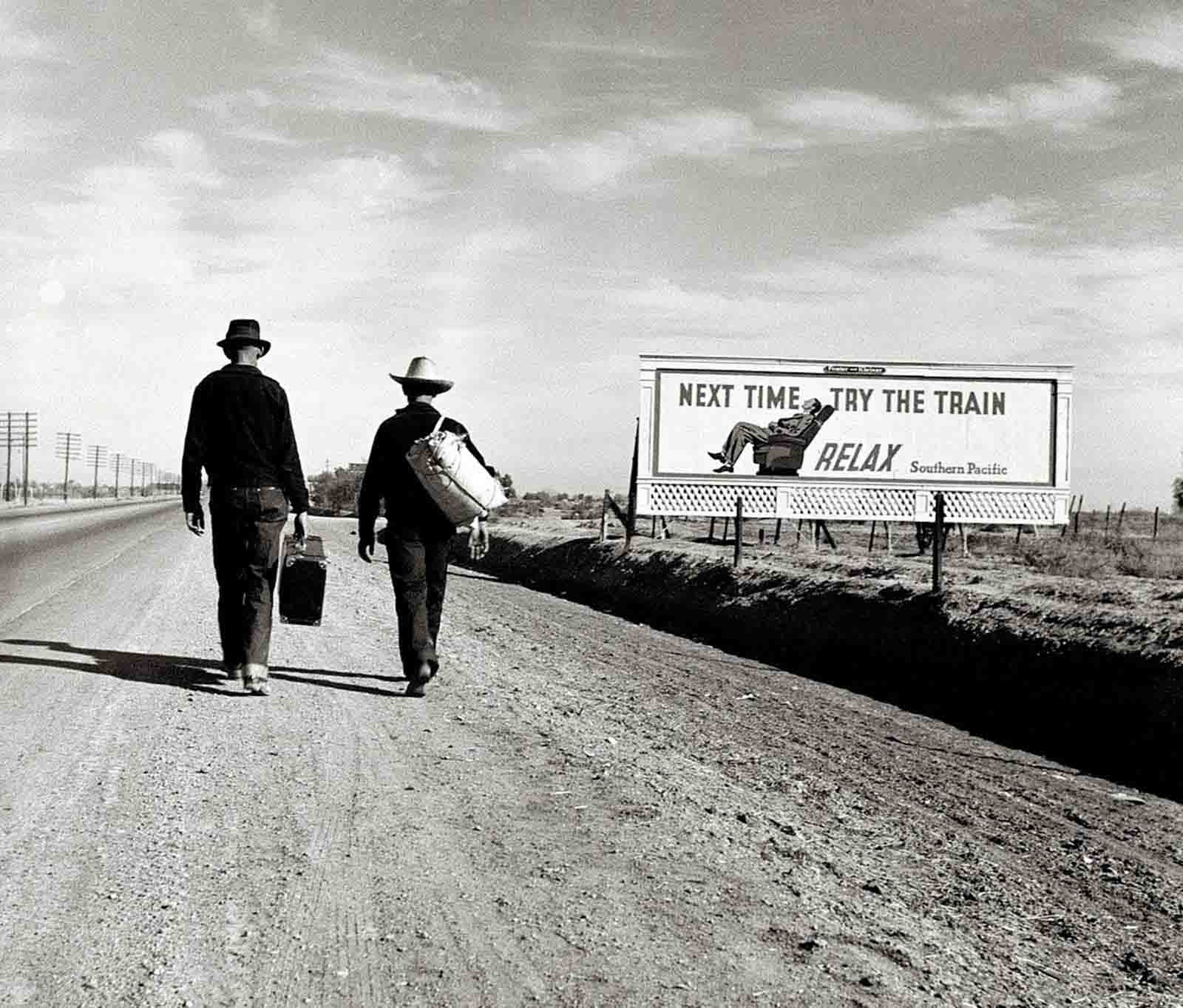
35. Schoolchildren line up for the free issue of soup and a slice of bread during the Depression, 1934

36. Unemployed workers sleeping in the bandstand at a park, 1938


